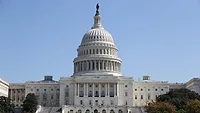BIZTRACKS
Stakeholders Ask Congress to Approve $214 Million More Than FDA’s FY 2025 Budget Request

Image credit: Reynaldo #brigworkz Brigantty via Pexels
On Thursday, April 18, 2024, U.S. Food and Drug Administration (FDA) Commissioner Robert M. Califf, M.D. appeared before the U.S. Agriculture/FDA Appropriations Subcommittee to present the FDA Fiscal Year (FY) 2025 Presidential Budget request. In response to the budget request, Subcommittee Chairman Harris (R-Maryland) said that, while more reasonable than previous years, the budget request still increases federal spending and ignores the current fiscal environment.
In light of the conversation around FDA’s FY 2025 funding, the Alliance for a Stronger FDA, a stakeholder group committed to advocating for a more effective FDA, has published its “ask” for FY 2025 funding for the agency, calling for a budget authority (BA) appropriation of $3.896 billion for salaries and expenses. This is $214 million more than the Presidential budget request submitted by FDA for FY 2025, and $377 million more than the FY 2024 funding level.
The Alliance’s request for FY 2025 is consistent with its request from last year and reflects that FDA’s funding needs have not diminished in the intervening time. The Alliance expresses that “FDA’s growing mission requires a budget that grows… its vital activities have become more complex and require greater sophistication and expertise. The agency needs an increased budget, more scientific and technical staff, and better analytical tools that support science-based decision-making and keep up with innovation.”
According to the Alliance, FDA’s BA (non-user fee) revenue remained consistent between FY 2023 and FY 2024, masking the challenge presented when agency resources are diminished by having to absorb pay raise increases and new initiatives without additional funding. The Alliance’s FY 2025 ask covers further pay raise increases, while providing a broader view of the growing program imperatives facing the agency.
Specifically for food safety, nutrition, and animal health, the Alliance is asking for FY 2025 funding of at least $1.35 billion for the Human Foods Program (HFP), and at least $255 million for animal drugs and feed. Areas of particular need identified by the Alliance, and the Alliance’s reasoning, is as follows:
- Food Chemical Safety. A robust food chemical safety/postmarket review program is a pressing need that is supported by a broad range of consumer and industry stakeholders, many of whom view it as their highest food safety funding priority. Additional funding—well beyond the President’s budget request—is needed to ensure rigorous and timely review of chemical and toxicological issues now pending before the agency, including 21 chemicals currently prioritized for reassessment. Such reviews can take many months to complete, so there is an urgency to get started and a need for substantial funding in FY 2025.
- Rule Implementation and Prevention Activities. FDA, state partners, and industry are currently working to implement the Food Traceability Final Rule and are anticipating upcoming changes to the Produce Safety Rule’s agricultural water standards. This, combined with advancements in the scientific understanding of the root causes of food contamination, make it important for FDA to maintain and grow efforts to work with state regulators and industry stakeholders to implement standards and practices that can improve food safety.
- Cooperation with State and Local Governments. FDA’s cooperative relationships with state and local regulatory programs (including state human and animal food testing laboratories) have been extremely valuable, and should be sustained and made more predictable. In many instances, the agency achieves better coverage at lesser expense by having a state and local presence.
- Establishing Nutrition Center of Excellence. The planned reorganization of the HFP includes the establishment of a Nutrition Center of Excellence. Given the relatively small size of the current nutrition program at FDA, additional funds will be needed to realize the vision for nutrition in the new organization. Priorities include children’s health, chronic disease, and consumer-facing food labeling.
- Enhancements in Risk-Based Targeting of Foods and Animal Health Program Oversight Activities. As the agency restructures to establish a new HFP, additional resources (e.g., advanced data systems, external data sets, and data scientists) are needed to create a data-driven foundation to improve risk-based oversight and surveillance activities in both human foods and animal food and drugs. More substantial investments in FY 2025 could also help to accelerate work planning and data sharing with state regulatory partners.
Additionally, the Alliance is requesting increased funding to strengthen agency-wide capacities, specifically, $81 million for the National Center for Toxicological Research (NCTR), $301 million for programs in the Office of the Commissioner and cross-cutting activities, $377 million for facilities costs and rent, and $19 million for building and facility repairs. Areas of particular need that fall under this category, as identified by the Alliance, include:
- Shortages and Supply Chain. This agency-wide crosscutting initiative supports FDA’s efforts to prepare for, build resilience to, and respond to shortages through improved analytics and regulatory approaches. Among other uses, FDA should be using monies to hire additional investigators, domestically and abroad, to fulfill inspectional needs associated with increased supply chain disruptions and consequent human food (and medical) product shortages in recent years. For much of the stakeholder community, it is a priority to upgrade FDA’s efforts to a level that will require additional funding, well beyond the President’s budget request.
- Public Health Employee Pay Costs. The President’s request included $115 million to offset part of the cost of mandatory pay raises. The amounts have been allocated to Centers and offices and the monies are incorporated in each component of the Alliance’s ask.
- Enterprise Transformation. FDA needs targeted investments to improve the efficiency of its operations and support modernization activities, such as centralizing planning, implementation, and governance of high priority business process improvement efforts. These include the continuation of the critical inspections’ platform implementation and expansion effort to implement common business processes and data optimization across FDA.
- Information Technology (IT) Stabilization and Modernization. FDA needs monies to continue building FDA’s centralized enterprise data modernization capabilities and strengthen its common data infrastructure, data exchange, and IT analytic services, talent, and tools.
The Alliance’s request for FY 2025 funding focuses exclusively on appropriations that come from monies paid by taxpayers (BA) and intentionally does not include medical product and tobacco user fees and mandated funding.
Looking for quick answers on food safety topics?
Try Ask FSM, our new smart AI search tool.
Ask FSM →





.webp?height=200&t=1678845007&width=200)



